ASUS Z97-DELUXE (NFC & WLC) Review: With Two Thunderbolt 2 Too
by Ian Cutress on May 16, 2014 11:00 AM EST- Posted in
- Motherboards
- Intel
- Asus
- NFC
- 802.11ac
- Thunderbolt 2
- Z97
- Wireless Charging
System Benchmarks
Rightmark Audio Analyzer 6.2.5
The premise behind Rightmark:AA is to test the input and output of the audio system to determine noise levels, range, harmonic distortion, stereo crosstalk and so forth. Rightmark:AA should indicate how well the sound system is built and isolated from electrical interference (either internally or externally). For this test we connect the Line Out to the Line In using a short six inch 3.5mm to 3.5mm high-quality jack, turn the OS speaker volume to 100%, and run the Rightmark default test suite at 192 kHz, 24-bit. The OS is tuned to 192 kHz/24-bit input and output, and the Line-In volume is adjusted until we have the best RMAA value in the mini-pretest. We look specifically at the Dynamic Range of the audio codec used on board, as well as the Total Harmonic Distortion + Noise.
Dynamic Range of the Z97-Deluxe
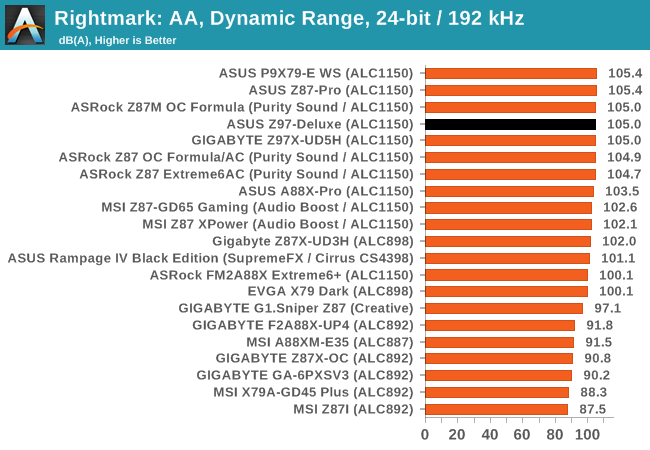
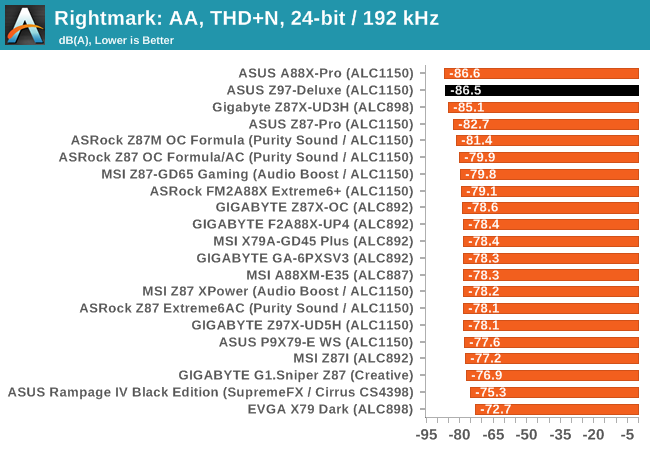
We had one small initial issue with our audio test on the Deluxe, causing distortion at 100% volume when the drivers off the disk were installed. The latest Realtek drivers from the ASUS website worked better, and gave some of the best audio results we have ever seen in our RMAA test.
USB Backup
For this benchmark, we run CrystalDiskMark to determine the ideal sequential read and write speeds for the USB port using our 240 GB OCZ Vertex3 SSD with a SATA 6 Gbps to USB 3.0 converter. Then we transfer a set size of files from the SSD to the USB drive using DiskBench, which monitors the time taken to transfer. The files transferred are a 1.52 GB set of 2867 files across 320 folders – 95% of these files are small typical website files, and the rest (90% of the size) are the videos used in the WinRAR test. In an update to pre-Z87 testing, we also run MaxCPU to load up one of the threads during the test which improves general performance up to 15% by causing all the internal pathways to run at full speed.
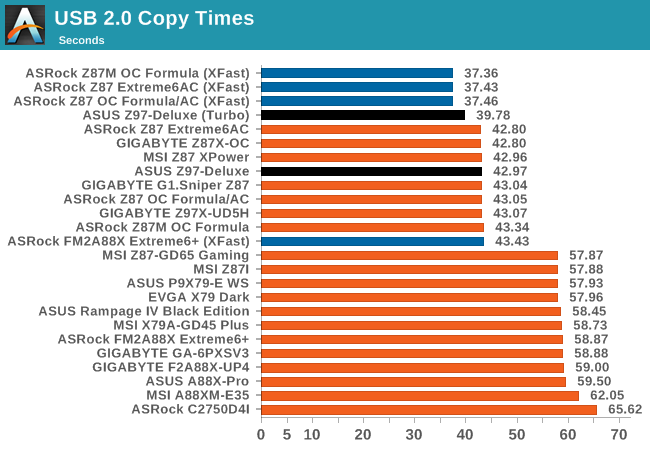
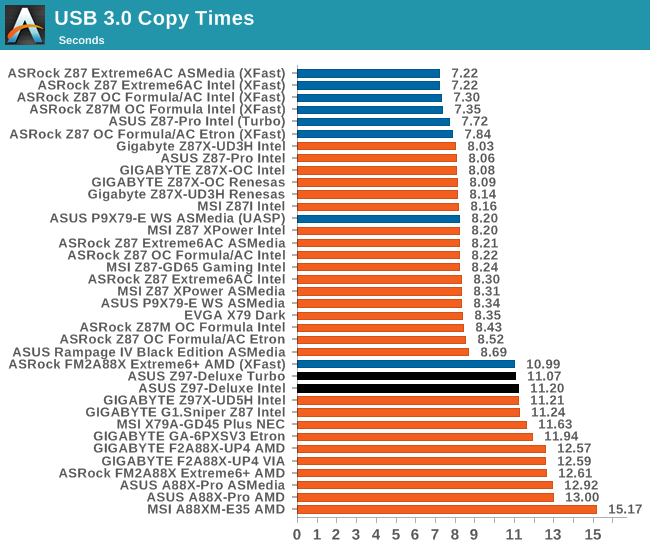
USB 2.0 performance with the Turbo mode activated did a good job with around a 10% time saving in the copy test. USB 3.0 gave a smaller increase, and judging by our current USB 3.0 tests on Z97, is a slight regression from Z87.
DPC Latency
Deferred Procedure Call latency is a way in which Windows handles interrupt servicing. In order to wait for a processor to acknowledge the request, the system will queue all interrupt requests by priority. Critical interrupts will be handled as soon as possible, whereas lesser priority requests, such as audio, will be further down the line. So if the audio device requires data, it will have to wait until the request is processed before the buffer is filled. If the device drivers of higher priority components in a system are poorly implemented, this can cause delays in request scheduling and process time, resulting in an empty audio buffer – this leads to characteristic audible pauses, pops and clicks. Having a bigger buffer and correctly implemented system drivers obviously helps in this regard. The DPC latency checker measures how much time is processing DPCs from driver invocation – the lower the value will result in better audio transfer at smaller buffer sizes. Results are measured in microseconds and taken as the peak latency while cycling through a series of short HD videos - less than 500 microseconds usually gets the green light, but the lower the better.
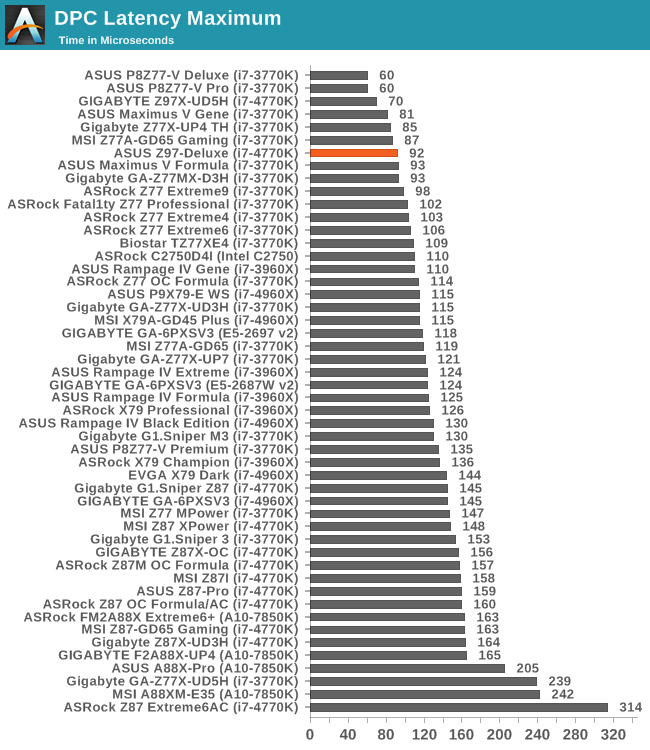
If there was one specific feature to fix from the 8-series motherboards, it was DPC Latency. Every Z87 motherboard we tested scored 150 microseconds or up (except for one at ~140). Like the UD5H, the Z97-Deluxe continues a good trend of below 100 microsecond results for Z97.


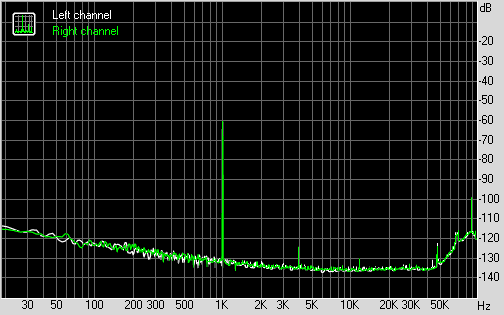








45 Comments
View All Comments
pavlindrom - Friday, May 16, 2014 - link
Lovely tongue-twisting title.LancerVI - Friday, May 16, 2014 - link
Nice board here, as usual, from Asus. I must say though, being a shallow man, that I would love to see and end to this gold design scheme and a return of my beloved blue.Please, for the love of all that is holy; Asus, return the blue scheme.
LancerVI - Friday, May 16, 2014 - link
*an endAlso or all black
Antronman - Friday, May 16, 2014 - link
The blue scheme was ugly, and far too bright. It was also a very cold color.I like this new dull, bronzed gold like on the TUF series, because it's a lot more neutral. You can make any color build you want with it.
LancerVI - Friday, May 16, 2014 - link
If you want neutral, all black would be truly neutral. Gold is just terrible.pixelstuff - Friday, May 16, 2014 - link
I was thinking this was one of the classiest looking color schemes they've ever made.Challenge - Monday, May 19, 2014 - link
Artistically the color choices are perfect and conform with the principles of color choice.superflex - Wednesday, May 21, 2014 - link
Classiest?The 90's called. They want their brass and glass coffee table back.
Flunk - Friday, May 16, 2014 - link
Do you know what we really need from the next generation of Intel processor/chipset? More PCI-E lanes.SirKnobsworth - Friday, May 16, 2014 - link
Rumor has it that the chipsets accompanying Skylake will have 20 PCIe 3.0 lanes, as well as an upgrades DMI 3.0 path to the CPU. As we can already tell, they will be sorely needed.